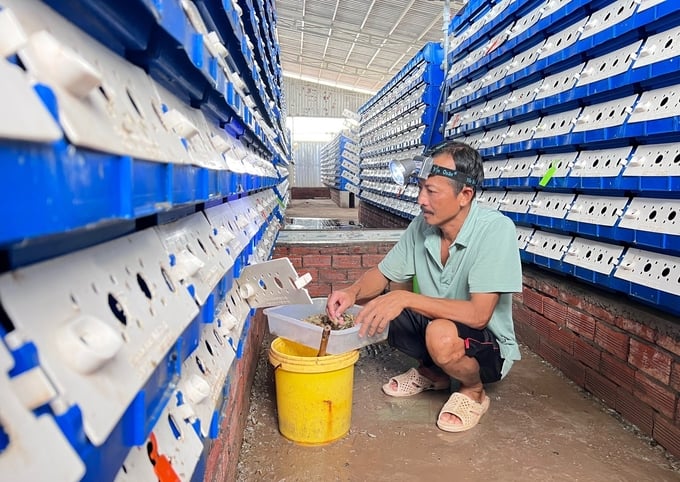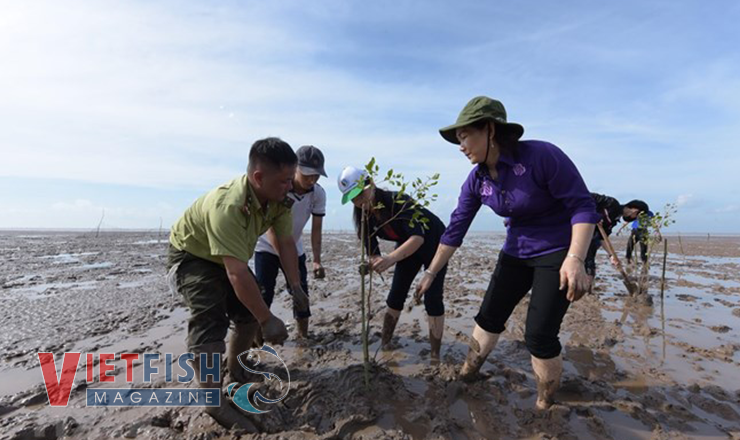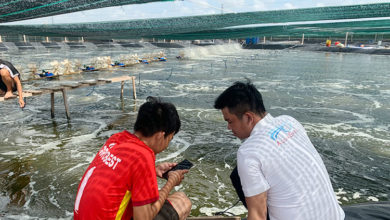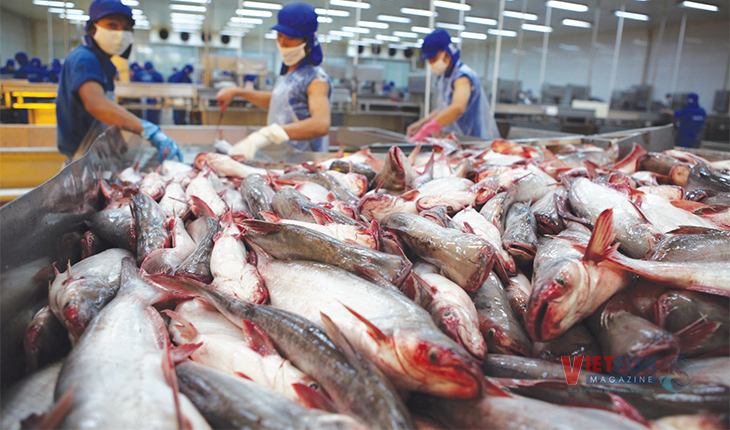Raising soft-shell crabs in plastic containers: significant potential
For many years, the crab farming model has developed steadily in coastal areas or regions with low salinity, influenced by brackish water during the dry months and fresh water during the rainy season, such as inland areas of My Tu, My Xuyen districts, and Vinh Chau town (Soc Trang). Among these, Vinh Chau has the largest sea crab farming area in the province, with approximately 700 hectares.
Increasing survival rates, quality, and value of commercial mud crabs
The ST Crab Farm in Vinh Tân commune, Vinh Chau town, has invested in 10,000 plastic containers to develop a model for farming roe crabs, soft-shell crabs, and especially molting crabs. Phan Thai Phap, a technical officer at the farm, mentioned that soft-shell crabs have high nutritional value and are favored by consumers. However, the supply is still insufficient, indicating significant potential for developing the soft-shell crab farming model in plastic containers.
Regarding economic efficiency, the price of soft-shell crabs is currently 2-3 times higher than that of regular crabs. On average, the farm sells about 1 ton of soft-shell crabs each month at a price of around 600,000 VND/kg. After deducting investment costs, the model yields a stable profit of 40-50%.
To ensure optimal efficiency, ST Crab Farm also practices semi-recirculating water for soft-shell crab farming. In this method, natural water is introduced into a holding pond, filtered for a certain period, and then transferred to a treatment pond before being used in the recirculating system.
 ST Crab Farm. Credit: KimAnh/nongnghiep.vn
ST Crab Farm. Credit: KimAnh/nongnghiep.vn
From there, the water is supplied directly to the plastic containers used for crab farming. This method leverages the advantages of naturally high salinity water. The plastic containers are placed directly on the shore, making care and management much more convenient. The crabs molt naturally without stimulation, ensuring consistent meat quality.
Phap added that if farmers successfully stimulate and harvest soft-shell crabs timely, they can achieve high profits. However, for sustainable development, in addition to technical knowledge, farmers need to master the farming process.
To achieve this, there must be a connection between farmers to ensure a steady supply of juvenile crabs for production and a stable supply chain for distribution.
Techniques for high-auality soft-shell crabs
The method of raising soft-shell crabs in plastic containers does not require much care, and the food sources are diverse, mainly natural trash fish.
Typically, crabs molt every 20 days. Therefore, to ensure timely harvesting and preservation to maintain quality, farmers need to monitor and classify crabs promptly when they show signs of molting.
“When checking, if crabs show signs of molting, farmers must watch closely and not let the crabs molt for too long, as the meat quality will decrease. After molting, crabs should be placed in plastic containers. If packaging soft-shell crabs, choose the time when the crabs are still alive and healthy to maintain maximum meat quality,” shared Phap.
Currently, ST Crab Farm uses two methods to produce soft-shell crabs. One is to let the crabs molt naturally at the appropriate time, and the other is to stimulate molting by cutting claws and swimming legs.
Each method has its advantages and limitations, so farmers are advised to monitor the weight of the crabs to determine the most suitable method.
Lam Anh Tien, Deputy Head of the Technical Department (Soc Trang Provincial Agricultural Extension Center), evaluated that the model of raising soft-shell crabs in plastic containers can be applied to both household and high-tech farm scales. Farmers need to equip themselves with and master the farming techniques to achieve the desired results.
Some key techniques include ensuring clean water suitable for crab growth, maintaining appropriate salinity for molting (20-25‰), and establishing methods for water quality management. This includes providing sufficient ponds for farming, conditioning crabs, and recirculating water systems.
Additionally, ensuring a supply of juvenile crabs from ponds or natural collection, and having local fresh food sources such as mussels and trash fish, is crucial. Farmers can feed crabs 2-4% of their body weight.
For the technique of stimulating molting by cutting claws and swimming legs, the agricultural extension sector advises farmers to move crabs to conditioning tanks for 5-7 days to ensure they are healthy and active. Then, use sharp tools or pliers to cut the claws and legs, allowing the crabs to naturally shed these parts, leaving only the swimming legs to stimulate molting.
Tien suggests selecting small-sized crabs (50g, 80g, or 100g) for this method to facilitate rapid molting. After 15 days, crabs can start forming soft shells, and farmers should monitor them frequently for timely harvesting.
During the farming process, farmers should release crabs at a density of 20-30 crabs/m2. Alternatively, crabs can be placed in individual plastic containers, farmed in ponds or in a system inside, to facilitate health monitoring, conditioning, and harvesting.
For the natural molting method, Tien recommends choosing crabs of the same size and uniform firmness. Crabs should be placed in plastic containers at a density of 1 crab/container. The advantage of this method is that it produces larger crabs with intact claws and legs, resulting in higher value. However, the drawback is a longer farming period and non-simultaneous molting.
VFM






